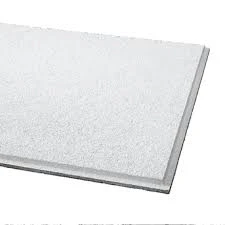10 月 . 31, 2024 18:56 Back to list
Understanding T-Bar Grids for Ceiling Installation and Design Considerations
Understanding T-Bar for Ceiling Grid Systems
Ceiling grids play a significant role in modern architectural design, providing not only functional benefits but also aesthetic flexibility. One of the key components of ceiling grid systems is the T-bar, which is essential for the structural integrity and overall effectiveness of the ceiling installation.
What is a T-Bar?
A T-bar, often referred to as a T-grid or T-section, is a type of metal framing material used in suspended ceiling systems. Named for its shape, the T-bar has a profile resembling the letter T when viewed from the side. These bars create a network of horizontal and vertical lines that support ceiling tiles or panels, ensuring they remain level and securely in place.
Components of a T-Bar System
A typical T-bar ceiling grid consists of several components
1. Main Bars These are the primary structural elements that run across the ceiling. They are usually installed perpendicular to the ceiling joists and form the backbone of the grid system.
2. Cross Tees These components connect to the main bars to create a grid. They are available in several lengths and allow for flexibility in the layout of ceiling tiles.
3. Wall Angles Installed at the perimeter of the room, wall angles provide a transition point where the ceiling grid meets the walls. They help to secure the grid system in place while also offering a finished edge.
4. Suspension Wire This is used to hold the main bars in position, typically anchoring them to the existing ceiling support structure.
Advantages of T-Bar Ceiling Grids
t bar for ceiling grid

1. Flexibility and Customization T-bar ceiling grids can accommodate various tile sizes and styles, allowing for creative designs that enhance interior spaces. Whether you choose acoustic panels for sound absorption or decorative tiles for aesthetics, T-bars provide the necessary support.
2. Easy Installation The modular design of T-bar systems simplifies installation. The pre-cut lengths and adjustable cross tees allow for a quicker setup, making them favorable for both contractors and DIY homeowners.
3. Accessibility One of the primary benefits of a suspended ceiling system is the accessibility it provides. With T-bars, maintenance and repairs can be easily performed, as ceiling tiles can be removed without disrupting the entire system. This is particularly valuable in commercial spaces where HVAC, electrical, or plumbing systems may need regular access.
4. Aesthetic Appeal T-bar systems are not just about functionality; they significantly enhance the visual appeal of a space. Available in various finishes and styles, they can complement any decor, from classic to contemporary.
Installation Considerations
When installing a T-bar ceiling grid, a few key considerations are essential for a successful project
- Planning and Measurements Accurate measurements and planning are crucial. This includes knowing the dimensions of the room and the layout of existing structures.
- Weight Load Be aware of the weight load of the tiles or panels being used. Ensure that the suspension system is adequately designed to support this weight without bending or sagging.
- Leveling Properly leveling the main bars is vital to achieving an even ceiling surface. Using a laser level can help ensure precision during installation.
In conclusion, T-bars are an integral part of ceiling grid systems, offering both structural support and design versatility. Their ease of installation and maintenance makes them a popular choice in residential and commercial projects alike. With a range of styles to choose from, T-bar ceilings can be tailored to meet the aesthetic and functional needs of any space.
-
Revolutionizing Interior Design with Ceilings t grid Suspended SystemNewsOct.29,2024
-
Revolutionizing Ceiling Design with ceiling access panel with Gypsum Tile WaterproofNewsOct.29,2024
-
Revolutionizing Interior Design with PVC Gypsum Ceiling: A Comprehensive GuideNewsOct.29,2024
-
Elevating Interior Design with High quality Mineral Fiber Ceiling TilesNewsOct.29,2024
-
Revolutionizing Interior Design with PVC Gypsum Ceiling: A Comprehensive GuideNewsOct.29,2024
-
Elevating Interior Design with High-Quality Mineral Fiber Ceiling Tiles: A Comprehensive GuideNewsOct.29,2024







